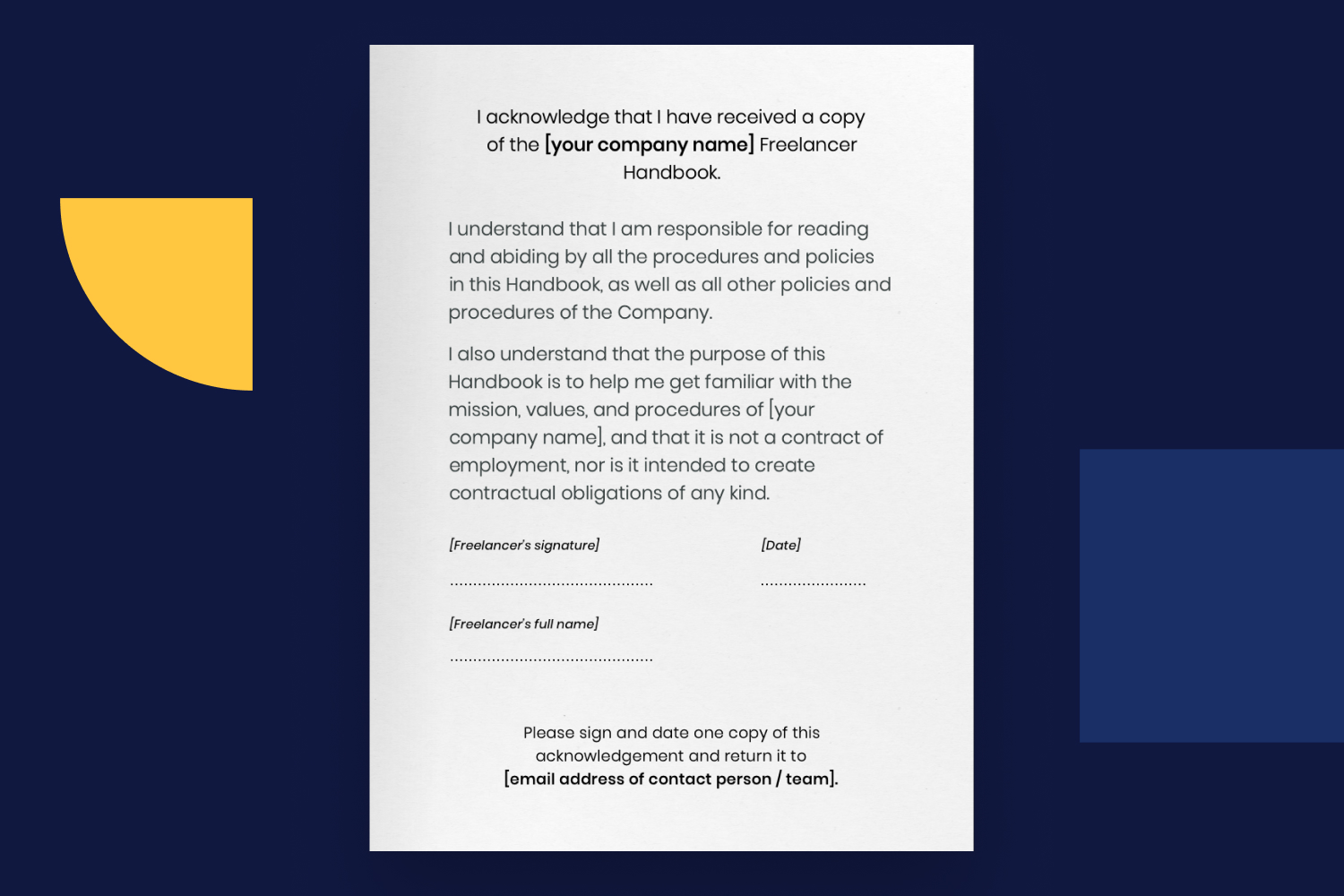
How To Create a Freelancer Handbook for Your Company
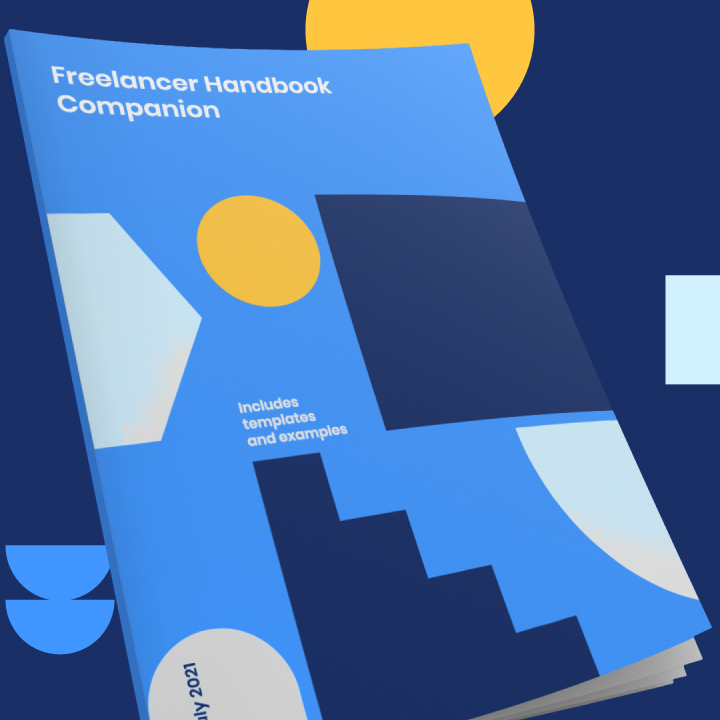

If your business hires freelancers and contractors, it’s a great idea to give them an employee handbook when you start working together.
A handbook helps familiarize new freelancers with your brand and culture. It also ensures they get onboarded quickly so they feel like part of your team as they begin their journey with you.
Your handbook will vary in content based on your industry, company size, and the types of freelancers you work with.
It can be as short or as detailed as you need it to be – but there are core points that should be covered.
Ticking off the basics ensures your freelancers understand and are aligned with who you are and what you stand for as a company, plus your expectations of them as an employer.
1.
Welcome
Set the scene by introducing your company. It’s important to get your new freelancers excited about working with you!
Write a couple of paragraphs giving them a brief overview of what your company does, who you help, and your goals as a business.
This section should also outline what your handbook contains, and why it’s important for your freelancers to read and refer to this manual – especially in the early days of working with you.
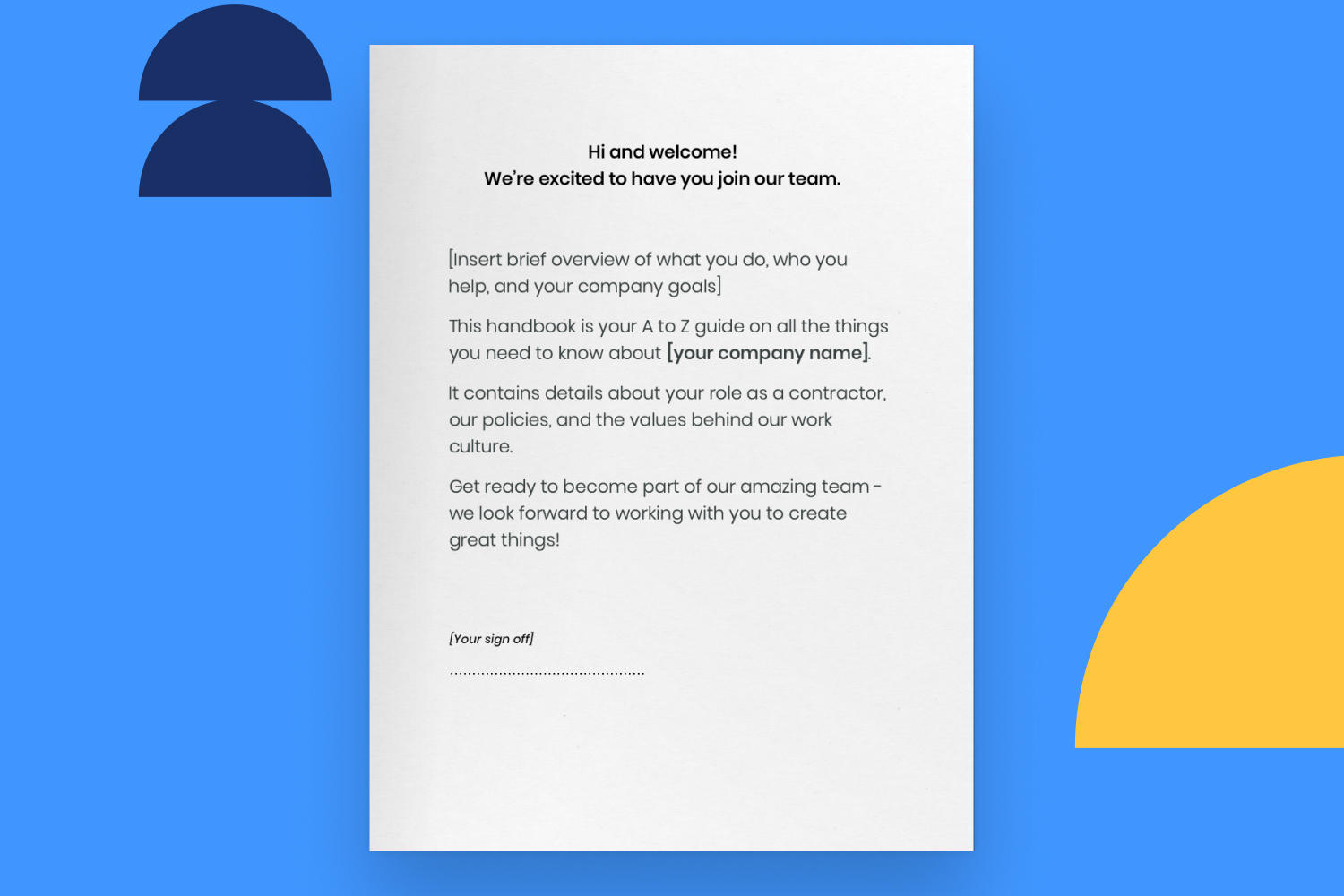
2.
Company mission
Follow up your welcome page with your brand’s mission statement and a brief explanation.
If you don’t have a formal mission statement, create a short, action-based sentence that tells your freelancers what the purpose of your business is, how you serve your customers, and your company objectives.
This section should give people clarity about what lies behind the “what”, “who”, and “why” of your company. It’s important for your contractors to feel that a company is aligned with their own personal values and purpose so they can do their best work for you.
Along with your mission statement, outline why you care about this mission, and how you’re different from other companies in your space.

3.
Brand story
Even if you don’t think your brand’s origin is that interesting or special, it’s important to include a short background in your handbook. Including your brand story helps your freelancers understand things like:
■ The initial idea that sparked your brand
■ The motivation behind growing the business
■ Struggles that were encountered along the way
■ How far you’ve come as a brand since the beginning
■ Where you’re headed as a company
An authentic, honest brand story builds connection and trust in your employees, especially if it’s told in a descriptive and emotive way.
Don’t be afraid to add a little humor and personality in here!
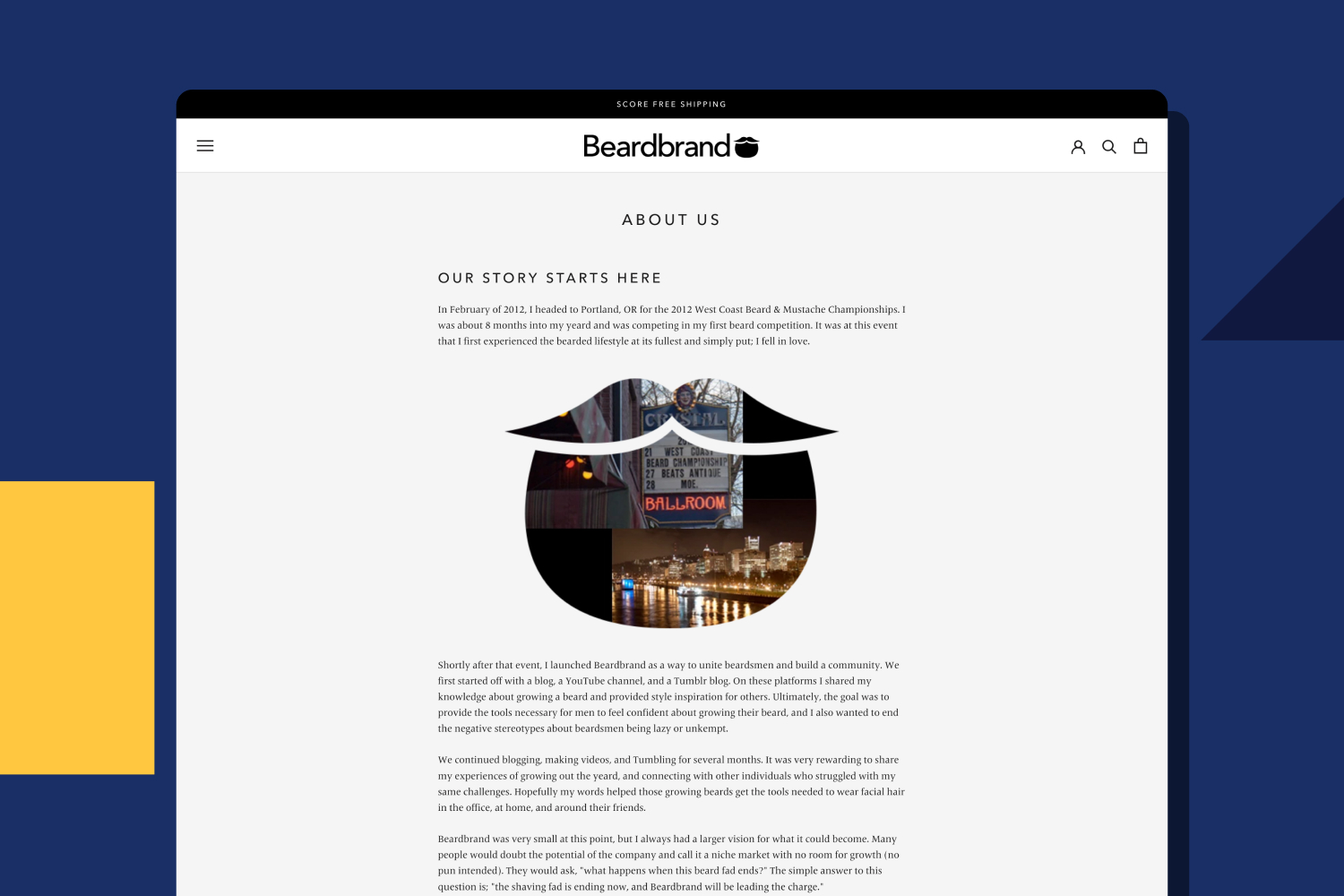

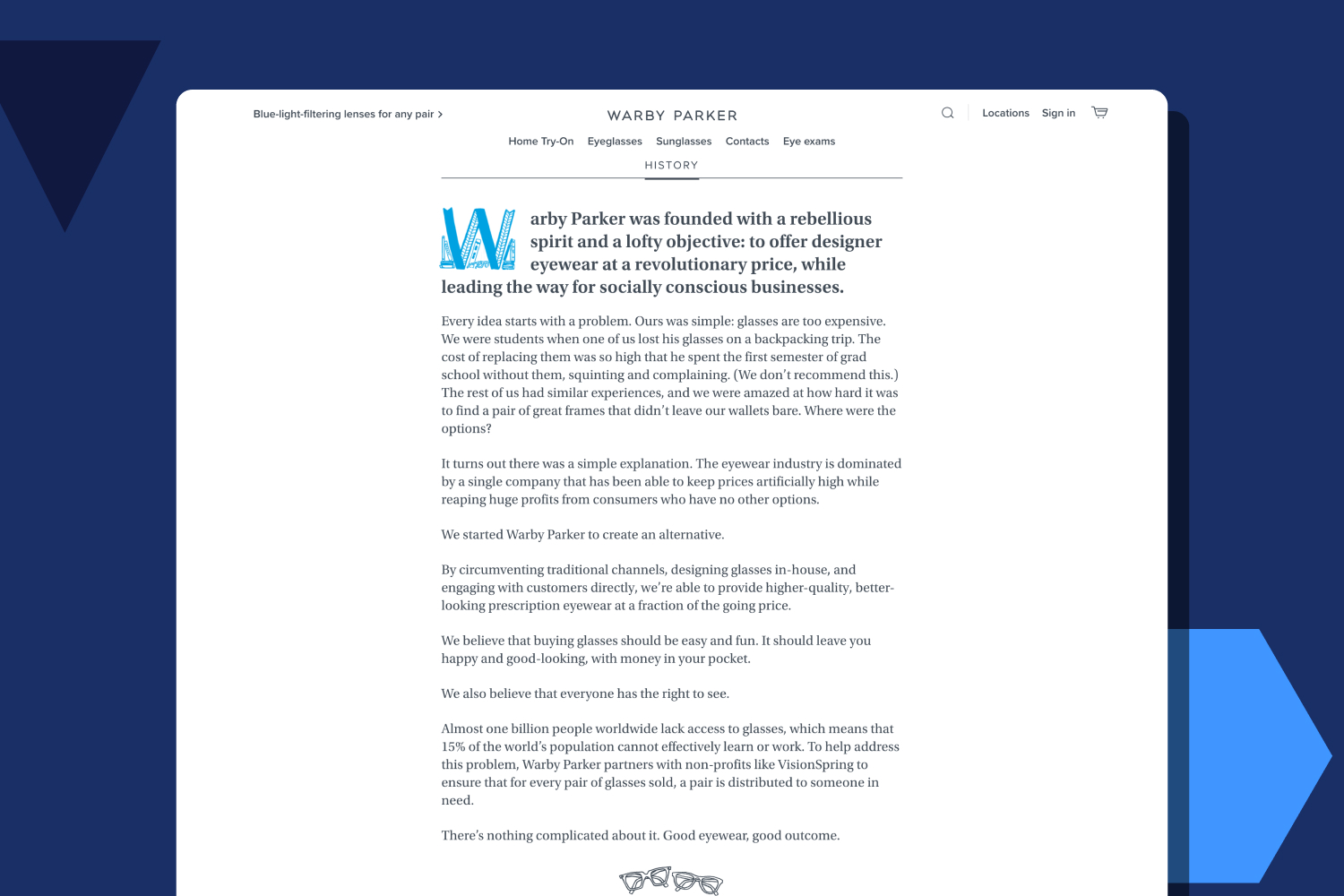
4.
Brand promise
Your brand promise lies behind the value and experience that your customers should expect when they interact with your company.
The more your company consistently delivers on this promise, the stronger your brand value becomes in the mind of your customers – and your freelancers.
Understanding your brand’s core promise to its customers helps your freelancers create and deliver their best work with this in mind.
Your promise should be:
■ Credible
■ Short
■ Unique
■ Memorable

5.
Founders and leaders in the company
This section should introduce your core leadership team, tell your freelancers a little bit about each leader, and outline the experience that each of them brings to the company.
Keep this short and sweet, and include a photo for each of the founders and leaders you feature.
Again, don’t be afraid to show your brand’s human side here. Fun facts or quirky hobbies can keep this section from being too dry and formal.

6.
Company values
It’s important that your freelancers understand the core values that drive your business.
After all, you probably hired them because they were smart, likeable, professional, and aligned in some way with who your company is and what you do.
Outline your company values in your handbook so that your new freelancers can keep them top of mind and put them into practice as they work with you.
7.
Logo
To your freelancers, a logo is just some shapely pixels sitting at the top of your website.
But logos often carry deep significance for companies (and have taken a ton of time and money to get right!) – so don’t overlook the
background behind your visual branding.
Include a short paragraph about the significance of your logo – and any interesting facts that might lie behind its origins.
8.
Voice, tone, style, and visual guidelines
This is particularly important for your creative freelancers. If you have an established messaging, voice, brand, or visual style guide – make sure you link to this in your handbook to ensure your freelancers aren’t trying to reinvent the wheel when they start on their projects.
If you don’t have any formal voice or style guide at your company, include a few paragraphs here to set your contractors on the path to success when you begin working together.
9.
Nature of employment
The finer details of being a freelancer for your company will be covered in the individual contract between each person and your company.
This section of your handbook should contain a high level overview of the nature of their freelance employment when they work for you – plus any important points or expectations that it’s important for them to know about.
10.
Payments and tax obligations
This one’s pretty straight- forward. Ensure your contractors understand their tax obligations as a freelancer, and give them all the relevant information they need to get paid once they finish a project.
If you’re using Worksuite to onboard your freelancers, cover the steps they’ll need to take and the documents they’ll need to provide to you. This will ensure they get paid on time, and that all parties will stay compliant for taxation purposes.
11.
Freelancer benefits
If your company has employee benefits that extend to your contract employees, outline those here.
This might include both tangible and intangible benefits, such as:
■ Laptops
■ Tech equipment
■ Insurance
■ Professional development
■ Health and wellness
■ Retirement plan contributions
■ Holidays
■ Team retreats and meetups
12.
Internal policies
To save your freelancers wading through what might be an extensive internal policy manual for your company, this section can cover the main points for them so they can familiarize themselves with your expectations.
You might include your company policies around things like:
■ Diversity and inclusion
■ Equal opportunities
■ Your working environment you promote
■ Transparency and communication
■ Background checks,
■ Privacy,
13.
Company contact details
This section should list relevant points of contact for the freelancers in your organization.
It’s a useful reference in case they need to get in touch with people on relevant teams such as editorial, management, or HR to ask questions or reach out for support at any time.
14.
Acknowledgement of receipt
To ensure your new freelancers have read through your handbook, it’s a good idea to include a page at the end of your manual that can be digitally signed and returned to you.
